BMW i5 VS Mercedes EQA – Specs, Efficiency & Price Comparison
Which model is the better choice – the BMW i5 or the Mercedes EQA? We compare performance (601 HP vs 292 HP), boot capacity (490 L vs 340 L), efficiency (15.90 kWh vs 14.40 kWh), and of course, the price (60200 £ vs 43500 £).
Find out now which car fits your needs better!
The BMW i5 (Sedan) is powered by a Electric engine and comes with a Automatic transmission. In comparison, the Mercedes EQA (SUV) features a Electric engine and a Automatic gearbox.
When it comes to boot capacity, the BMW i5 offers 490 L, while the Mercedes EQA provides 340 L – depending on what matters most to you. If you’re looking for more power, you’ll need to decide whether the 601 HP of the BMW i5 or the 292 HP of the Mercedes EQA suits your needs better.
There are also differences in efficiency: 15.90 kWh vs 14.40 kWh. In terms of price, the BMW i5 starts at 60200 £, while the Mercedes EQA is available from 43500 £.
Compare all the key specs now and find out which model fits your lifestyle best!
In an electrifying showdown, the BMW i5 and Mercedes EQA offer compelling choices for luxury EV enthusiasts. The BMW i5 impresses with its dynamic performance and seamless blend of technology and comfort, ensuring an engaging driving experience. Conversely, the Mercedes EQA stands out with its sleek design, user-friendly infotainment system, and impressive range, appealing to those seeking both style and electric efficiency.
BMW i5
The sleek new i5 captivates drivers with its striking design and innovative features that blend luxury and efficiency. Inside, the spacious cabin boasts cutting-edge technology, ensuring a connected and comfortable ride for all passengers. Whether navigating city streets or embarking on a weekend getaway, the i5 delivers a dynamic driving experience that is sure to impress.
details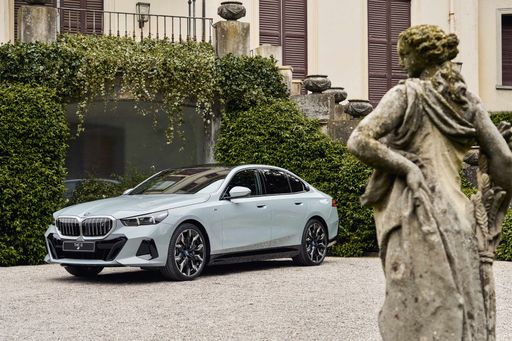 @ BMW
@ BMW
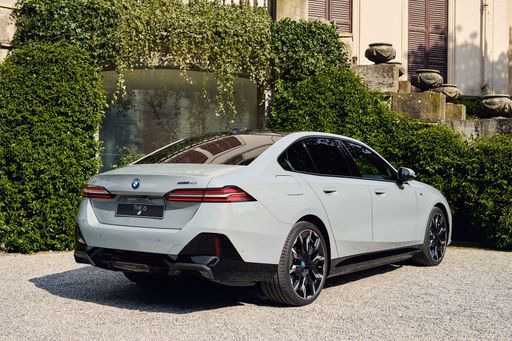 @ BMW
@ BMW
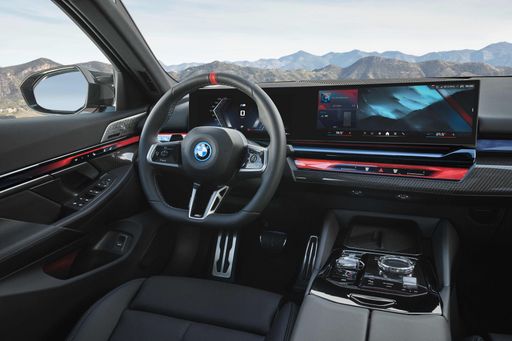 @ BMW
@ BMW
Mercedes EQA
The Mercedes-Benz EQA presents a refined blend of elegance and electric performance, perfectly suited for urban environments. Its sleek and modern design emphasises aerodynamic efficiency while providing a sumptuous interior that epitomises luxury and comfort. With advanced technology seamlessly integrated into its user-friendly interface, the EQA ensures a connected and enjoyable driving experience.
details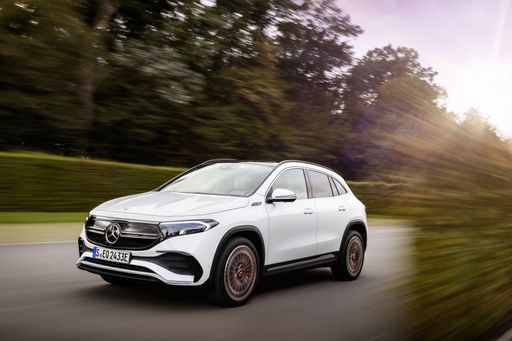 @ group-media.mercedes-benz.com
@ group-media.mercedes-benz.com
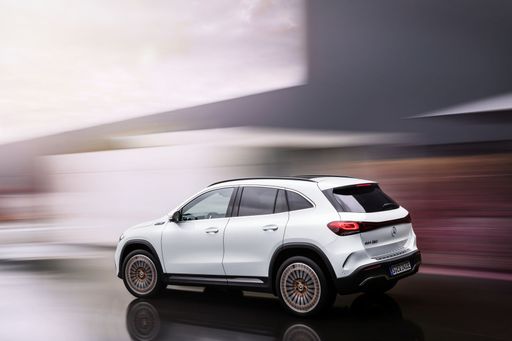 @ group-media.mercedes-benz.com
@ group-media.mercedes-benz.com
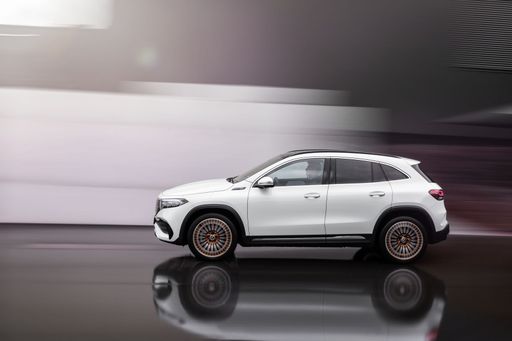 @ group-media.mercedes-benz.com
@ group-media.mercedes-benz.com
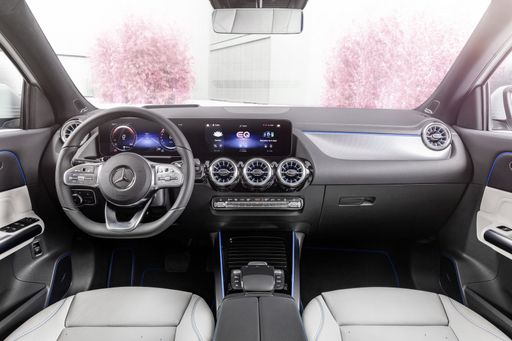 @ group-media.mercedes-benz.com
@ group-media.mercedes-benz.com
Electrifying Showdown: BMW i5 vs Mercedes EQA
The transition to electric mobility has seen manufacturers stepping up their game, offering innovative and efficient vehicles. In this comparison, we delve into the intricacies of the BMW i5 and the Mercedes EQA, two prominent contenders in the electric vehicle marketplace.
Design & Aesthetics
Both the BMW i5 and the Mercedes EQA display distinctive design languages that reflect their respective brand identities. The BMW i5’s sedan body combines sleek lines with a formidable stance, measuring 5060 mm in length, 1900 mm in width, and 1515 mm in height. This gives it a robust yet elegant presence on the road.
On the other hand, the Mercedes EQA is designed as a compact SUV, characterized by its sporty and modern silhouette. It is slightly shorter and wider at 4463 mm in length, 1834 mm in width, and up to 1613 mm in height, offering a more compact and agile profile compared to the i5.
Performance & Drive
Under the hood, the BMW i5 offers a powerhouse of options ranging from 340 HP to an impressive 601 HP. With a torque range from 430 Nm to a massive 820 Nm, the i5 runs on either rear-wheel drive or all-wheel drive configurations. Its acceleration reaches 0-100 km/h in as little as 3.8 seconds, delivering thrilling performance.
The Mercedes EQA, while more modest in power, offers commendable outputs of 190 HP to 292 HP and torque readings from 385 Nm to 520 Nm. It comes in both front-wheel and all-wheel drive variants, accelerating from 0-100 km/h in 6 seconds at its peak performance level.
Range & Efficiency
Efficiency is a key consideration for electric vehicles, and both models excel in their own rights. The BMW i5 boasts an electric range of up to 582 km with a consumption rate between 15.9 and 18.4 kWh/100 km, powered by an 81.2 kWh battery. This ensures that longer journeys are less stress-inducing with fewer stops for charging.
Conversely, the Mercedes EQA provides an electric range of up to 561 km, consuming between 14.4 and 16.9 kWh/100 km. Its battery capacity stands between 66.5 and 70.5 kWh. This highlights its efficiency, ideal for urban settings and eco-conscious drives.
Interior & Comfort
Inside, both vehicles cater to comfort and sophistication. The i5, featuring a trunk capacity of 490 liters and seating for 5, emphasizes luxury with ample space for passengers and luggage. It exudes the classic BMW essence of premium craftsmanship.
The EQA, also seating 5, offers a trunk capacity of 340 liters but leverages its SUV design for higher ride height and visibility. Mercedes aims to combine practicality with luxury, ensuring a serene ride environment enhanced by the latest in automotive technology.
Final Verdict
Choosing between the BMW i5 and the Mercedes EQA boils down to personal preference and usage scenarios. The i5, with its superior power and range, suits those seeking performance and long-distance driving. Meanwhile, the EQA is the more pragmatic choice for those valuing efficiency and urban maneuverability with a stylish edge.
Both vehicles reflect the future of electrified driving, showcasing pioneering advancements that uphold the legacy and innovation that BMW and Mercedes-Benz represent.

|

|
|
|
|
Costs and Consumption |
|
|---|---|
|
Price
60200 - 85300 £
|
Price
43500 - 57400 £
|
|
Consumption L/100km
-
|
Consumption L/100km
-
|
|
Consumption kWh/100km
15.9 - 18.4 kWh
|
Consumption kWh/100km
14.4 - 16.9 kWh
|
|
Electric Range
511 - 582 km
|
Electric Range
458 - 561 km
|
|
Battery Capacity
81.20 kWh
|
Battery Capacity
66.5 - 70.5 kWh
|
|
co2
0 g/km
|
co2
0 g/km
|
|
Fuel tank capacity
-
|
Fuel tank capacity
-
|
Dimensions and Body |
|
|---|---|
|
Body Type
Sedan
|
Body Type
SUV
|
|
Seats
5
|
Seats
5
|
|
Doors
4
|
Doors
5
|
|
Curb weight
2205 - 2380 kg
|
Curb weight
2045 - 2115 kg
|
|
Trunk capacity
490 L
|
Trunk capacity
340 L
|
|
Length
5060 mm
|
Length
4463 mm
|
|
Width
1900 mm
|
Width
1834 mm
|
|
Height
1505 - 1515 mm
|
Height
1608 - 1613 mm
|
|
Payload
515 - 535 kg
|
Payload
425 kg
|
Engine and Performance |
|
|---|---|
|
Engine Type
Electric
|
Engine Type
Electric
|
|
Transmission
Automatic
|
Transmission
Automatic
|
|
Transmission Detail
Reduction Gearbox
|
Transmission Detail
Reduction Gearbox
|
|
Drive Type
Rear-Wheel Drive, All-Wheel Drive
|
Drive Type
Front-Wheel Drive, All-Wheel Drive
|
|
Power HP
340 - 601 HP
|
Power HP
190 - 292 HP
|
|
Acceleration 0-100km/h
3.8 - 6 s
|
Acceleration 0-100km/h
6 - 8.6 s
|
|
Max Speed
193 - 230 km/h
|
Max Speed
160 km/h
|
|
Torque
430 - 820 Nm
|
Torque
385 - 520 Nm
|
|
Number of Cylinders
-
|
Number of Cylinders
-
|
|
Power kW
250 - 442 kW
|
Power kW
140 - 215 kW
|
|
Engine capacity
-
|
Engine capacity
-
|
General |
|
|---|---|
|
Model Year
2023 - 2024
|
Model Year
2024 - 2025
|
|
CO2 Efficiency Class
A
|
CO2 Efficiency Class
A
|
|
Brand
BMW
|
Brand
Mercedes-Benz
|
BMW i5
With a blend of luxurious design, cutting-edge technology, and impressive electric performance, the BMW i5 is set to redefine what consumers expect from an electric sedan. This new model carries on the legacy of the BMW brand while embracing an electric future with style and efficiency.
Performance and Powertrains
The BMW i5 offers a range of electric powertrains that users can choose from, ensuring there’s an option that fits every lifestyle. With the i5 eDrive40 configuration producing 340 HP from its rear-wheel-drive system, drivers can experience an exhilarating ride with a 0-100 km/h acceleration time of just 6 seconds. For those who crave even more power, the i5 xDrive40 variant boasts 394 HP and reduces the sprint to just 5.4 seconds, thanks to its all-wheel-drive capability.
At the top of the lineup, the i5 M60 presents an astonishing 601 HP and accelerates from 0 to 100 km/h in an impressive 3.8 seconds. This electrifying performance aligns perfectly with BMW’s commitment to delivering a thrilling driving experience, all while maintaining zero CO2 emissions.
Battery and Range
The i5 is equipped with an innovative battery system offering a capacity of 81.2 kWh. Depending on the variant, the vehicle provides an electric range between 511 km and 582 km, allowing for confident long-distance driving without frequent recharges. The efficiency of the different models is impressive, with energy consumption figures ranging from 15.9 kWh/100 km in the eDrive40 to 18.4 kWh/100 km in the M60 variant.
Exceptional Interior and Technology
Step inside the i5, and you’ll be greeted by a luxurious and spacious cabin designed to enhance the driving experience. With seating for five and a trunk capacity of 490 liters, the i5 combines comfort with practicality. Cutting-edge technology further elevates the driving experience with BMW's infotainment system, seamlessly integrating connectivity, navigation, and entertainment features through a high-resolution display.
Moreover, the i5 is equipped with extensive driver assistance features, ensuring maximum safety and convenience during every journey. Features like adaptive cruise control, lane-keeping assistance, and automated parking support make driving easier and more enjoyable.
Innovative Design Elements
The design of the BMW i5 embodies a modern aesthetic with its sleek sedan silhouette. Measuring 5060 mm in length, 1900 mm in width, and up to 1515 mm in height, it exudes both presence and elegance on the road. The aerodynamic shape not only enhances the vehicle’s visual appeal but also improves efficiency by reducing drag.
The inviting interior features high-quality materials and customizable ambient lighting, which creates a refined atmosphere. In addition, the innovative use of sustainable materials aligns with its eco-conscious electric nature, marking a significant step towards greener automotive manufacturing.
Pricing and Availability
The BMW i5 is available in several trims, with prices starting from €70,200 for the eDrive40 and reaching up to €99,500 for the M60 model. Each variant offers unique features and capabilities, catering to a wide range of consumer preferences and requirements.
The Future of Electric Mobility
As the automotive industry transitions towards electrification, the BMW i5 stands as a beacon of innovation and luxury. With its state-of-the-art performance capabilities, user-friendly technology, and commitment to sustainability, the i5 is not just a car—it's a statement of the future of mobility.
As electric vehicles increasingly dominate the market, the BMW i5 showcases how automakers can push the boundaries of what is possible, setting the standard for future electric sedans.
Mercedes EQA
An Introduction to the Mercedes-Benz EQA: A Glimpse of the Future
The Mercedes-Benz EQA stands at the forefront of automotive innovation, representing a harmonious blend of luxury, performance, and sustainability. As part of the prestigious EQ range, this all-electric SUV embodies the essence of modern electromobility. In this article, we delve into the technical sophistication and innovative features of the EQA that make it a standout choice in the electric vehicle market.
Under the Bonnet: Powertrain and Performance
The Mercedes-Benz EQA offers a versatile range of specifications to cater to various preferences and requirements. From the agile front-wheel-drive models to the more robust all-wheel-drive versions, the EQA provides a wide spectrum of power outputs ranging between 190 PS and 292 PS. This impressive power comes alongside an efficient energy consumption of 14.4 to 16.9 kWh/100km, offering an electric range of up to 561 km, making it suitable for both city commutes and longer journeys.
Intelligent Design and Efficiency
Designed to achieve optimal aerodynamics, the EQA's exterior combines elegance with efficiency. Its streamlined dimensions feature a length of 4,463 mm, a width of 1,834 mm, and a height ranging from 1,608 to 1,613 mm. The adaptive use of materials ensures a competitive gross weight of 2,045 to 2,115 kg while maintaining a remarkable 0 g/km CO2 emission, indicative of its commitment to sustainable driving.
Interior Comfort and Technological Innovation
Inside, the EQA is designed to offer maximum comfort and state-of-the-art technology. It accommodates up to five passengers with ample room and a boot capacity of 340 litres. The advanced MBUX (Mercedes-Benz User Experience) system is at the heart of the cabin, enabling intuitive interaction through voice or touch controls, ensuring that every journey is as convenient as it is connected.
Safety and Driving Assistance
Safety is paramount in the EQA, with an array of driver assistance systems to enhance security on the road. From adaptive cruise control to active lane-keeping assist, the EQA's suite of safety features ensures a secure and confident driving experience. These systems are integrated seamlessly, offering peace of mind without compromising on the joy of driving electric.
Cost and Value Proposition
With starting prices ranging from €50,777 to €66,961, the EQA positions itself as a cost-effective luxury electric SUV. The investment is further justified by its minimal running costs, with monthly expenses between €1,179 and €1,496 and a cost per km between 47.2 and 59.9 cents. This competitive pricing is complemented by its maintenance savings, making it a prudent choice for those making the transition to electric mobility.
Conclusion: A New Era of Electric Luxury
The Mercedes-Benz EQA exemplifies a fusion of luxury, sustainability, and cutting-edge technology. Its impressive range, intelligent design, and advanced features embody the future of electric vehicles. Whether you seek efficiency, style, or state-of-the-art innovation, the Mercedes-Benz EQA offers all this and more, marking a significant milestone in the evolution of electric driving.
The prices and data displayed are estimates based on German list prices and may vary by country. This information is not legally binding.
